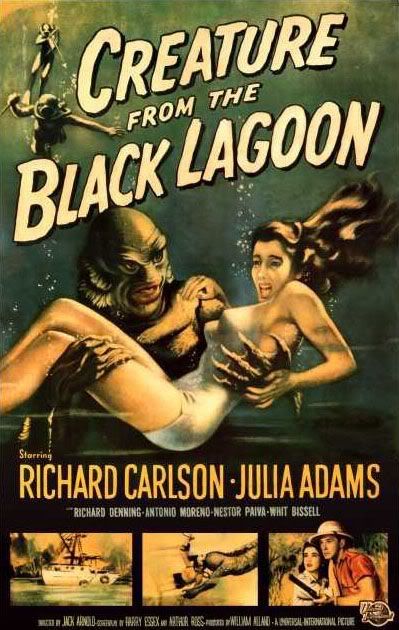Harry Essex was a prolific American screenwriter. He was born on 29 November 1910 in New York City. He died on 5 February 1997 in Los Angeles. His career spanned more than fifty years. His film credits include: Dragnet (1947) I, The Jury Creature from the Black Lagoon It Came from Outer Space The Las Vegas Story The Sons of Katie Elder Desperate Man Made Monster Kansas City Confidential The Killer That Stalked New York What Ever Happened to Baby Jane? New York-born Harry Essex planned on a writing career throughout his young life. Among his first jobs were stints on the New York newspapers "The Daily Mirror" and "The Brooklyn Eagle", short stories for "Collier's" and "The Saturday Evening Post" and even a Broadway play titled "Something for Nothing" (which Essex later called "a resounding failure"). Writing for the movies was uppermost in Essex's mind throughout the period (and he DID co-write the original story for Universal's Man Made Monster (1941)), but "the big break" never came, and World War II intervened. Five or six days after Essex's discharge, he ran into an old acquaintance whose new job was finding playwrights to turn into screenwriters for Columbia Pictures. Essex wrote or co-wrote dozens of movies and numerous TV shows during his lengthy Hollywood career. Shortly before memorably cooling herself by standing over a subway grating in Billy Wilder's The Seven Year Itch (1955), the nameless "Girl Upstairs" (Marilyn Monroe) told her escort (Tom Ewell) how sorry she felt for the leading character in the film they had just seen: the hideous, slimy Creature from the Black Lagoon. Harry Essex, one of the screenwriters who brought this monstrous but somehow appealing half-man, half-fish to the screen, was also responsible for another 1950s science fiction classic. Born in New York City, Essex wanted to be a writer from early boyhood. After graduating from St John's University in 1936, he did welfare work by day, while writing for the theatre by night. His play Something for Nothing was produced on Broadway in 1937. He went to Hollywood in the early 1940s, and was starting to do well in films when wartime service intervened. After demobilisation from the US Army Signal Corps, he and Martin Rackin wrote Desperate (1947), a taut thriller directed by Anthony Mann. In Essex's screenplay for Frightened City (1950), smallpox was unknowingly carried around New York by a smuggler (Evelyn Keyes). Unfortunately, while the film was still in production, 20th Century-Fox released Panic in the Streets, in which pneumonic plague was unknowingly carried around New Orleans by a murderer (Jack Palance); consequently, Frightened City was shelved for nearly a year. Essex co-wrote Universal's The Fat Man (1951), which starred J. Scott Smart as the obese detective Brad Runyon, a role he had played on radio since 1946. The series was developed especially for radio by Dashiell Hammett, creator of The Thin Man, but as he had just been jailed for refusing to co-operate with the House of Representatives' Committee on Un-American Activities, Hammett's name was conspicuous by its absence on the screen credits of The Fat Man. Another sign of those paranoid times was that Essex and Earl Felton received screenplay credit on The Las Vegas Story (1952), but not their co-writer Paul Jarrico, who had been blacklisted. Essex directed four films, beginning with Mickey Spillane's I, the Jury (1953), which he also wrote. That same year, he adapted Ray Bradbury's story "The Meteor" as It Came from Outer Space, in which, unusually, the bug-eyed aliens weren't bent on world conquest, but were only on earth long enough to repair their spaceship. With the same production team, Essex co-wrote The Creature from the Black Lagoon the following year. He wrote such westerns as Wyoming Mail (1950), Raw Edge (1956), The Lonely Man (1957), and John Wayne's The Sons of Katie Elder (1965), in which four straight-shootin' brothers avenged the family honour. Because Essex shared script credit with Talbot Jennings, Allan Weiss, and William H. Wright, one critic wondered if each Elder sibling had his own writer. In the 1950s he wrote television scripts for Philco TV Playhouse and Playhouse 90, and in the 1960s for The Untouchables. He also wrote many plays, novels and short stories. In 1954, when his I, the Jury, It Came from Outer Space, Devil's Canyon, The Creature from the Black Lagoon and Southwest Passage - all 3-dimensional films - were on release, a Hollywood trade paper quipped, "Harry Essex has so many 3-D pictures out, you have to wear special glasses to see him".
Saturday, May 26, 2012
Who's Who In Knickerbocker Village History: Harry Essex, 1940 Census
Harry Essex lived at 12 Monroe Street in 1940. Among his neighbors were Seth and Rose Babits, Irving Romm, Emmanuel Leef and Sam Gershenson.
from Harry Essex's biography:
Subscribe to:
Post Comments (Atom)



























No comments:
Post a Comment